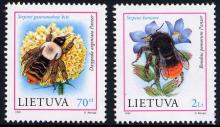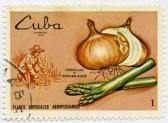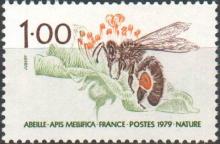De bestuivingscrisis in de natuur: de wederzijdse afhankelijkheid van bijen en planten zorgt voor een neerwaartse spiraal die wordt bevorderd door milieuverontreiniging met imidacloprid
Naast de honingbij komen er in Nederland nog zo'n 340 andere bijensoorten voor. Ook hommels behoren tot de bijen. Niet elke bijensoort zoekt voedsel op dezelfde bloemen. Zo zijn er bijen die uitsluitend stuifmeel verzamelen op gele composieten. Andere hebben zich nog sterker gespecialiseerd en voeden hun larven uitsluitend met het stuifmeel van klavers, klokjes of zeeaster. Deze sterke relatie met bepaalde bloemen maakt bijen extra kwetsbaar: uit recent onderzoek blijkt dat bijen sterk te lijden hebben onder de verarming van de Nederlandse flora. Vice versa blijkt ook dat de planten die voor hun bestuiving op bijen zijn aangewezen, te lijden hebben onder de verarming van de Nederlandse bijenfauna. De wederzijdse afhankelijkheid zorgt voor een neerwaartse spiraal. Deze neerwaartse spiraal wordt de laatste jaren bevorderd door het sterk toegenomen gebruik van het neonicotinoide insecticide imidacloprid in de land- en tuinbouw. Vrijwel iedere toepassing van imidacloprid in Nederland veroorzaakt grond- en oppervlaktewaterverontreiniging waardoor wilde planten (en daarmee ook niet-doelwit insecten zoals bijen) ongewild worden vergiftigd met imidacloprid. Op 29-03-2012 werd het causale verband tussen bijensterfte en neonicotinoide bestrijdingsmiddelen in twee artikelen in het tijdschrift Science onweerlegbaar bewezen.








